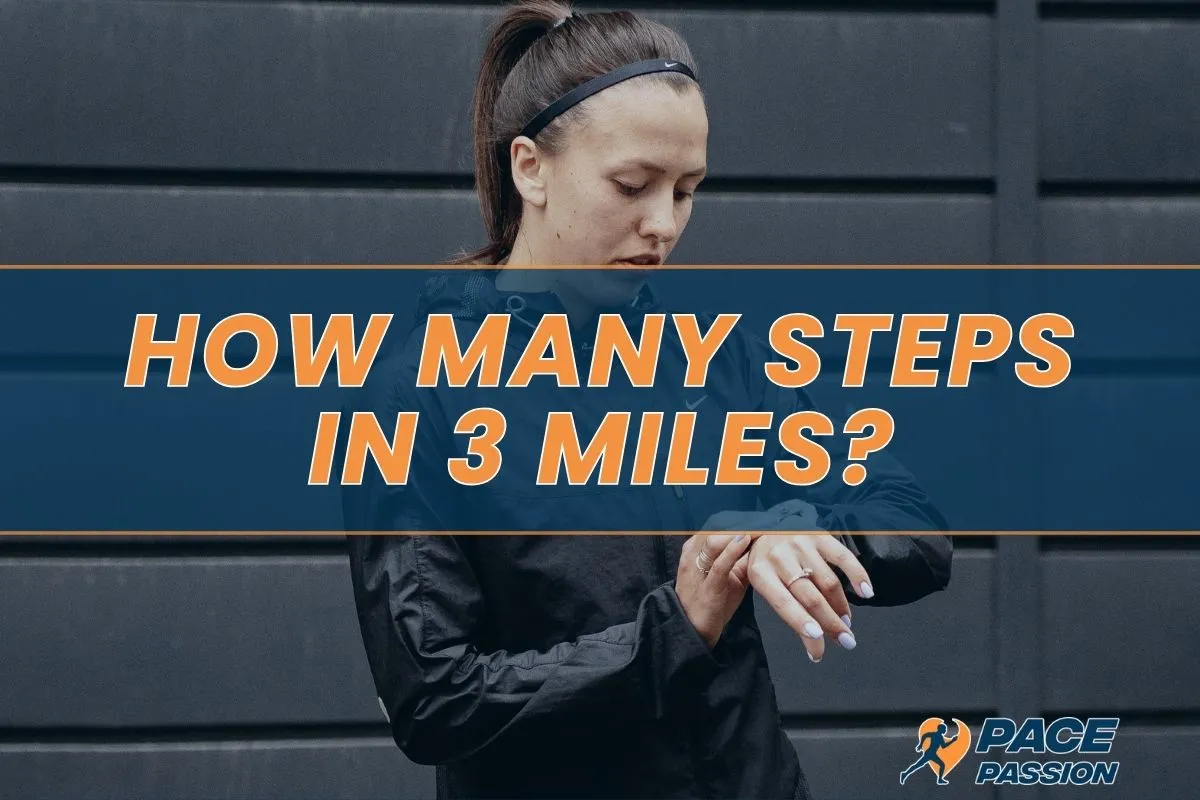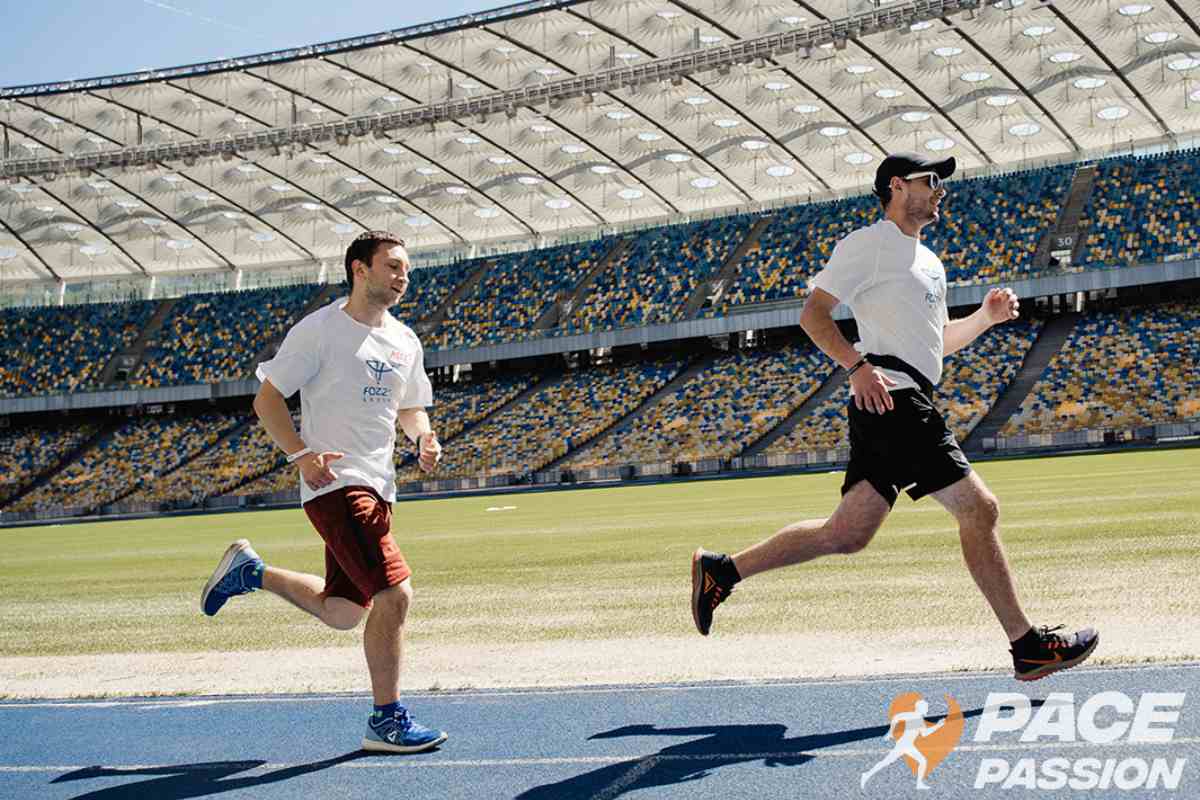How Many Steps in 3 Miles? Running vs. Walking
Running and walking are both great activities for maintaining a healthy lifestyle, but have you ever wondered how many steps in 3 miles each activity takes?
There’s no one-size-fits-all answer, since factors such as height, gender, speed, and experience all play a role. However, today we will investigate how the number of steps can be calculated based on different paces for men and women, as well as how to track your step progress over time. Join us as we explore 3 miles in steps!
What Are the Average Steps in 3 Miles?
How many steps in 3 miles? A 3-mile walk requires an average of 6500 steps for men and 6900 steps for women. During a run, a man takes about 4600 steps, while a woman takes about 4900 steps. Gender, height, stride length, and pace influence the number of average steps in 3 miles.

How Many Steps Are in 3 Miles?
Counting steps is a great way to track and measure physical activity for both runners and walkers alike. By counting the number of steps taken in each session, it’s easier to monitor your progress and set goals that are achievable based on how often you exercise.
The length of your stride when walking or running can vary. This is due to factors such as the speed you are moving, as well as height and gender.

Pro Tip:
Generally speaking, an average-sized adult covers about 2 to 3 feet in one step. Of course, there are biomechanical differences that may result in some people covering more or less distance per step.

Pro Tip:
Generally speaking, an average-sized adult covers about 2 to 3 feet in one step. Of course, there are biomechanical differences that may result in some people covering more or less distance per step.
The pace at which someone runs or walks is also a factor. If someone runs faster then they will take more steps in a given amount of time than if they were jogging or walking slowly.
Studies have shown that taking fewer than 4,000 steps per day makes you inactive. Make sure you reach your daily step goal that has many health benefits such as reducing stress levels and strengthening bones while improving blood pressure levels.
How Many Steps Is 3 Miles Walking?
So, how many steps is 3 miles when walking? The average person takes about 6700 steps to cover 3 miles when walking at a 3mph pace. This equates to 1416 steps per kilometer and 2267 steps per mile. The average man takes 6500 steps for a 3-mile walk, while a woman takes around 6900 steps in 3 miles.
How many steps is 3 miles for a woman and for a man? Here’s a table showing the number of steps and average time for a 3-mile walk, depending on pace and gender:
| Activity type | Men steps | Women steps | Average time |
|---|---|---|---|
| Very slow walk (<2mph) | 10300 | 10700 | 02:00 |
| Slow walk (2mph) | 8400 | 8800 | 01:30 |
| Average walk (3mph) | 6500 | 6900 | 01:00 |
| Brisk walk (4mph) | 5550 | 6000 | 00:45 |
As you can see, the speed that you are walking affects the number of steps per mile.
Subscribe to Our Running Newsletter!
Get free running tips from renowned professional athletes and discounts from top-notch brands.
3 Miles Is How Many Steps for a Run, and How Are They Measured?
Accurately measuring the number of steps a runner takes in 3 miles can be an important factor to determine fitness level, skill, and overall performance. The number of steps taken when running 3 miles depends on each runner’s age, gender, experience level, length of stride, and pace.
3 miles equals how many steps for a run? Let’s take a look at the number of steps for men and women, depending on the runners’ pace:
| Activity type | Men steps | Women steps | Average time |
|---|---|---|---|
| Jog (5mph) | 500 | 5800 | 00:36 |
| Run (6mph) | 4640 | 4960 | 00:30 |
| Fast run (7.5mph) | 37800 | 4100 | 00:24 |
| Very fast run (10mph) | 2920 | 3240 | 00:18 |
As you can see, the faster you run, the fewer steps you take per mile. Men tend to have longer strides than women due to their added height and weight. For example, during a marathon, an average male runner takes 32800 steps at a 7.5mph pace, while women take about 35600 steps covering the same distance in the same amount of time.
Running Distance Calculator
We recommend use the calculator below to measure the approximate distance you might take to cover your.
Distance Calculator
Result:
What Affects the Number of Steps in 3 Miles?
No two people take the exact same number of steps in a mile, as factors like height, gender, speed, experience level, and terrain all play an important role. Read on to find out more about how these factors affect your step count during your 3-mile run!
1. Height and Gender
Height is an important factor in determining how many steps someone will take in 3 miles. A taller person’s stride length, or the distance between each step they take, is typically longer than that of a shorter runner.

Gender also has an effect on step count, as different gait patterns between genders often result in differences in stride length.
2. Speed
The number of steps taken in 3 miles is directly related to the speed at which you are running or walking. Faster speeds result in a lower number of steps, as each stride covers more distance.
The average walking speed for most healthy adults is around 3 mph, while experienced runners may be able to achieve 6-10 mph on an even flat surface depending on their fitness level and experience.
Walking at different speeds has its own health benefits. Going fast gives you good cardiovascular workout while taking long strides give you great leg muscles strengthening exercises.

3. Experience Level
An experienced runner who has developed good running technique and pacing over years of practice may cover 3 miles in fewer steps than someone who is new to running.
This is because an experienced person usually takes longer strides, which allows them to move further with each step compared to a beginner, who will likely have shorter strides.
Also, more advanced runners tend to naturally maintain a faster pace that requires a quicker movement of the legs – translating into even fewer steps taken per mile. On the other hand, if someone is just beginning their fitness journey and taking up jogging for the first time, it’s likely that they won’t yet be able to develop optimal speed. Usually, beginners require additional steps and energy expenditure throughout their run.

4. Terrain
Running on uneven terrain can significantly affect the number of steps taken in a mile. Uneven surfaces require more effort for each stride and will often result in taking more steps per mile than running on predictable terrain, such as a track.
In addition to increasing the amount of work required by your body when running over uneven terrain, it also offers other benefits. Working within these environment makes you put extra focus into where you step which can help stimulate your neuromuscular system.

A stronger neuromuscular system paired with increased aerobic performance can be beneficial for an endurance runner or athlete looking to maximize their performance. For example, many top-level marathon runners practice their runs out of trail and mountain routes knowing its benefit in helping them achieve peak physical condition.
5. Climate
Temperature, humidity, wind, and altitude each play major roles when it comes to running. Heat causes the body to overheat faster than normal, which causes fatigue in the muscles due to salt depletion.
High-humidity days are more demanding, as well. Wind also affects pace, depending if it’s a tailwind or a headwind.
How Do You Track the Number of Steps You Take in 3 Miles?
Tracking the number of steps you take in 3 miles is a great way to monitor your progress and achieve fitness goals. These days, there are many technological tools available that can help make tracking very easy.
Fitness trackers record all of your step counts across various distances, and also track other activities, like cycling and swimming. Smartphone apps also measure step activity and duration of exercise with fairly reliable accuracy.
Finally, traditional pedometers provide basic, easy-to-use step tracking for runners who just want an accurate count, without the bells and whistles of more advanced systems.

Number of Steps When Walking 3 Miles vs. Running 3 Miles
Running 3 miles typically takes an average of 4400 steps. However, this number can vary depending on different factors, such as gender, height, stride length, and pace.
Men tend to have a lower average step count than women due to their longer strides. Additionally, while recreational runners may take between 1200-1800 steps per mile (depending on speed), competitive runners usually take fewer than 1000 steps per mile, due to their longer strides.
For the average person, walking 3 miles requires approximately 7900 steps. Women tend to take slightly more steps than men when walking the same distance because their stride length is shorter.

Pro Tip:
A person’s height can also affect how many steps are necessary for each mile walked. Taller people tend to take fewer steps per mile than those who are shorter.

Pro Tip:
A person’s height can also affect how many steps are necessary for each mile walked. Taller people tend to take fewer steps per mile than those who are shorter.
Frequently Asked Questions About 3 Miles in Steps
Is 10000 Steps Equal to 3 Miles?
For most people, 10000 steps is equivalent to 3 miles of slow walking (less than 2mph) or 6 miles of running (6mph). The exact distance for each individual varies based on their stride length, height, and the speed at which they move.
How Many Steps Is Three Miles on a Treadmill?
The exact number of steps in 3 miles on a treadmill depends on several different factors, such as gender, height, stride length, and the speed at which you walk or run. Generally speaking, walking 3 miles at a pace of around 3 mph would equate to approximately 6,700 total steps, while running 3 miles at a pace of 6mph will require around 4500 steps.
How Long Does It Take to Walk 3 Miles?
On average, it takes between 45 minutes and 2 hours to walk 3 miles. The walking speed can vary depending on many factors, such as terrain, experience level, and climate. A brisk walk usually takes around 15-20 minutes per mile, at an average of 1800 to 2000 steps per mile.
Final Thoughts on 3 Miles in Steps
The number of steps in 3 miles is highly individual, being determined by factors like gender, height, stride length, and pace. On average, it takes 6,700 steps to cover the distance when walking and 4500 steps when running at a pace of 6mph.
For most people, reaching a milestone of 6000 steps typically requires walking 3 miles or jogging 3.5 miles. It’s important to remember that 10000 steps per day is often considered an important goal for overall health and fitness.
How many steps do you usually take when running 3 miles? Please share your experience in the comments below!
Also Read:
- Do Your Ankles Hurt When You Run
- What Are the Advantages and Disadvantages of Fartlek
- Best Trail Shoes for Forefoot Runners
- Why Does Running Make Your Toenails Fall Off
- How Long Does It Take To Run 7 Miles
- Can You Run After Knee Replacement
- 14000 Steps to Miles
- Best Running Shoes For Sesamoiditis
- Saucony vs. Brooks
References:
- Amanda Paluch et al. Steps per Day and All-Cause Mortality in Middle-aged Adults in the Coronary Artery Risk Development in Young Adults Study. JAMA Netw Open. 2021;4(9):e2124516. https://jamanetwork.com/journals/jamanetworkopen/fullarticle/2783711
- Calculator Site. Miles to Steps Calculator. https://www.thecalculatorsite.com/health/miles-steps.php (accessed November 8, 2023)
- Catrine Tudor-Locke et al. “How fast is fast enough? Walking cadence (steps/min) as a practical estimate of intensity in adults: a narrative review.” British journal of sports medicine vol. 52,12 (2018): 776-788 https://bjsm.bmj.com/content/52/12/776
- Catrine Tudor-Locke et al. “How many steps/day are enough? For adults.” The international journal of behavioral nutrition and physical activity vol. 8 79. 28 Jul. 2011 https://www.ncbi.nlm.nih.gov/pmc/articles/PMC3197470/
- National Institutes of Health. Number of steps per day more important than step intensity https://www.nih.gov/news-events/nih-research-matters/number-steps-day-more-important-step-intensity (accessed November 8, 2023)
If you have any questions or suggestions, you can contact us via email – [email protected]






